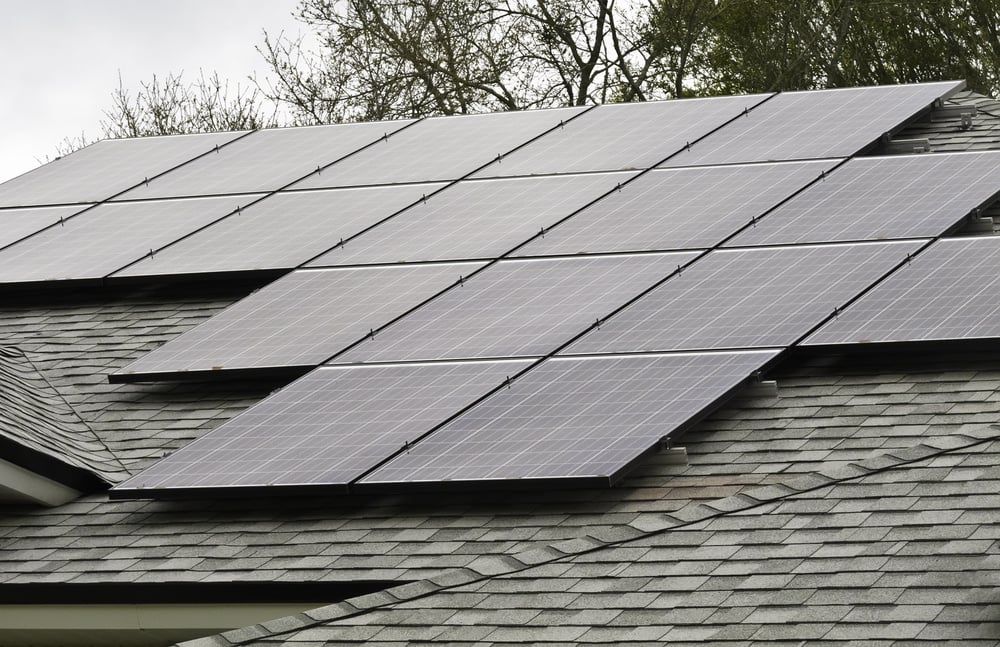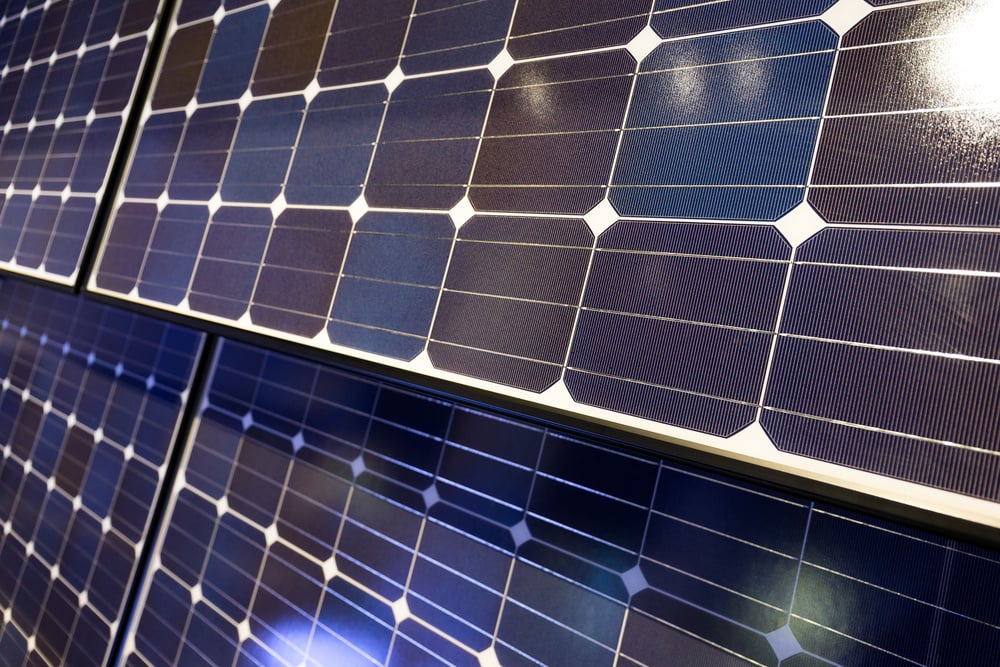Brace for Impact: Why AI Could Wreck the Power Grid and Your Budget
The Grid Under Siege Imagine a world where the power you rely on every day – from keeping your home lit and comfortable to charging your devices and...
13 min read
Peter Swenson : Sep 2, 2024 8:30:00 AM

If you’ve been looking into solar energy, you’ve probably noticed there’s no one-size-fits-all solution. Instead, there are a few key options: grid-tied, off-grid, and hybrid solar systems. Each of these has its own unique set of benefits and challenges, and figuring out which one suits your needs best can feel like picking a dessert at a fancy restaurant—everything looks good, but you’ve got to choose.
Here’s the deal: deciding between these systems is all about balancing what you want with what you need. Do you want to go completely off-grid and kiss the utility companies goodbye forever? Or are you just looking to shave some dollars off your electric bill without making drastic changes? Maybe you want a little bit of both—a taste of independence but with the safety net of the grid.
In this article, we’re going to explore the three main types of solar systems in-depth. Whether you’re looking to save money, gain energy independence, or find a happy medium, we’ll walk you through the pros and cons of each option. By the end, you’ll have a clear sense of which solar setup fits your lifestyle best.
But first, a quick overview of the players on the field.
Let’s break down the solar system landscape, starting with the basics. There are three main types of solar systems you can install: grid-tied, off-grid, and hybrid. Each one functions a bit differently, depending on how it interacts with the local utility grid (or if it even does at all).
Grid-tied solar systems are connected to the utility grid. This is the most common setup for homeowners because it’s cost-effective and relatively simple. You get to use solar energy when it’s available, but if the sun’s not shining—or if your panels aren’t generating enough electricity—you can seamlessly pull power from the grid.
Then we’ve got the off-grid solar systems, which, as the name suggests, are completely disconnected from the grid. These systems are all about self-sufficiency. With off-grid, you generate your own electricity and store any excess energy in batteries for later use. No grid means no backup, so you’re relying on the energy you produce and store, which gives you total independence—but also requires some serious energy management.
Finally, there’s the hybrid solar system, which is kind of like the best of both worlds. Hybrid systems are connected to the grid but also have batteries for energy storage. That means you can store extra energy for when you need it, like during a power outage or when electricity rates are sky-high, but you still have the grid as a backup if your solar production and storage fall short.
So, that’s the lay of the land. Grid-tied is about affordability and ease, off-grid is about independence, and hybrid is about flexibility. Now, let’s dive into each one, starting with the most common choice—grid-tied solar systems.
When most people think about going solar, they’re thinking about grid-tied solar systems. And it makes sense—they’re the most popular option out there for a reason. Grid-tied systems are all about simplicity, affordability, and convenience. If you’re looking to dip your toes into solar energy without committing to a complete overhaul of your energy setup, grid-tied might just be your perfect match.
So, what exactly is a grid-tied system? It’s pretty straightforward. You’ve got your solar panels on the roof, soaking up sunlight and converting it into electricity for your home. But here’s the twist: when the sun isn’t shining, or if you need more electricity than your panels can provide, you’re still connected to the utility grid. This means you can draw power from the grid whenever you need it—so no worrying about running out of juice when you’re binging your favorite Netflix show on a cloudy day.
But it gets better. With grid-tied systems, you’re not just taking energy from the grid. If your solar panels are producing more electricity than you’re using, that extra power doesn’t go to waste. Instead, it gets sent back to the grid, and in many places, you actually get paid for it through something called net metering. It’s like having a side hustle where your solar panels are making money while you sleep.
Let’s talk about why grid-tied systems are so popular. For starters, they’re the most cost-effective option. You don’t need to buy expensive batteries to store energy like you would with an off-grid system, which means your upfront costs are a lot lower. Plus, the installation is usually quicker and easier because you’re simply hooking up to the existing grid.
Another big win for grid-tied systems is the low maintenance. Since you’re not dealing with batteries, which require maintenance and eventual replacement, you’re looking at fewer long-term costs and headaches. It’s a “set it and forget it” kind of deal—once it’s installed, you’re pretty much good to go.
And, of course, there’s the net metering perk. Depending on where you live, net metering allows you to sell the excess energy your solar panels produce back to the grid. So, on those sunny days when your system is producing more power than you can use, you can rack up credits that lower your future energy bills. Think of it as a solar-powered cashback program.
But one of the best parts about grid-tied systems is the peace of mind. You don’t have to worry about running out of electricity because you’re always connected to the grid. Whether it’s a cloudy week or your energy usage spikes for some reason, the grid has your back.
Of course, nothing’s perfect. While grid-tied systems are great for a lot of people, there are a few drawbacks to consider. The biggest one? Dependence on the grid. If there’s a power outage in your area, your solar system is going down with it—even if the sun is shining and your panels are ready to work. Why? Well, it’s a safety thing. During an outage, your system shuts down to prevent sending electricity back into the grid while utility workers are making repairs. So, if you live in an area prone to blackouts, this might be something to think about.
Another potential downside is that with a grid-tied system, you’re still somewhat at the mercy of your utility company. Sure, you’re producing your own electricity, but you’re still hooked into the grid, which means you’re subject to any changes in utility rates and policies. If you’re looking for total independence from the grid, this isn’t the option for you.
A grid-tied solar system is ideal if you’re looking for an affordable, low-maintenance way to reduce your electricity bills and lower your carbon footprint. If you live in an area where the grid is reliable, and you don’t mind the occasional reliance on it, this system is the easiest and most cost-effective way to go solar.
You get to enjoy the benefits of solar energy without the big investment in batteries or worrying about running out of power. Plus, with net metering, you can even make money from your system when you’re not using all the electricity it generates. If you’re all about saving money and keeping things simple, grid-tied is the way to go.
If grid-tied systems are like playing it safe in the shallow end, then off-grid solar systems are the deep dive into total energy independence. For those who are ready to ditch the grid and live completely self-sufficiently, off-grid is the way to go. But before you start picturing yourself as some kind of solar-powered superhero, there are a few things you need to know—off-grid living comes with both freedom and responsibility.
An off-grid solar system does exactly what it sounds like: it takes your home off the grid. There’s no utility company to back you up, no monthly electricity bill, and no connection to the local power grid at all. You’re producing 100% of your own electricity through solar panels, and since you’re not connected to the grid, you’ve got to find a way to store that energy for when the sun isn’t shining (because, newsflash: it’s going to get dark at night).
Enter the battery bank. In an off-grid system, the solar panels generate electricity during the day, and the excess energy is stored in batteries for use later. When the sun goes down, or when there’s a cloudy stretch, you’re living off the energy you’ve stored up. It’s a fully self-contained energy system that doesn’t rely on anyone but you (and, of course, the sun).
This kind of system is perfect for people who live in remote areas where hooking up to the grid is too expensive or not possible. It’s also great for those who just want to declare their independence from the utility companies and take control of their energy needs. But, spoiler alert: going off-grid isn’t exactly a walk in the park.
Let’s talk about the good stuff. The biggest and most obvious benefit of going off-grid is complete energy independence. You’re not tied to any utility company, which means no more power outages, no fluctuating electricity rates, and—best of all—no more monthly electricity bills. You produce your own power and use it as you see fit. No one can tell you otherwise.
This independence is especially attractive if you live in a rural or remote area where grid access isn’t reliable or even available. In fact, for some people, getting connected to the grid in the first place is so expensive and complicated that going off-grid with solar becomes a more logical and affordable solution.
Another big perk is that off-grid systems are unaffected by grid outages. While your grid-tied neighbors are scrambling for flashlights during a blackout, you’re sitting pretty with your solar-powered home fully operational. You’ve got your own electricity bank stored up, so even when the world goes dark, your home stays lit.
Plus, going off-grid isn’t just good for your wallet in the long run; it’s also great for the environment. You’re relying entirely on renewable energy, reducing your carbon footprint to practically zero when it comes to electricity use.
Of course, with great power (pun intended) comes great responsibility. The freedom of an off-grid solar system comes with some pretty hefty upfront costs. Unlike grid-tied systems, which don’t need batteries, an off-grid setup relies entirely on energy storage. That means you’ll need to invest in a large battery bank to make sure you’ve got enough power for when the sun isn’t shining—especially if you have high energy needs or live in an area that doesn’t get consistent sunlight.
And those batteries aren’t cheap. The cost of batteries is one of the biggest expenses in an off-grid system, and depending on how much energy you need to store, the price can add up quickly. Plus, batteries have a lifespan, so you’ll need to replace them every 5 to 15 years, adding to your long-term costs.
Another challenge with off-grid systems is energy management. When you’re not connected to the grid, there’s no backup power. If you run out of stored energy, you’re out of luck until your solar panels start generating electricity again. This means you’ll need to be mindful of your energy usage and make sure your system is sized correctly to meet your needs, especially during cloudy weather or in the winter when sunlight is limited.
For most off-grid homeowners, a backup generator is a must-have. Even the best-designed off-grid systems can have days where the solar panels and batteries just can’t keep up, and a generator can provide a safety net during these times. But that’s another piece of equipment you’ll need to buy, maintain, and fuel.
Off-grid solar systems aren’t for everyone. They require a serious investment upfront and a willingness to be actively involved in managing your energy. But for those who are up for the challenge, the rewards are pretty sweet. If you live in a remote area where the grid isn’t an option—or if you just really want to live independently and never worry about an electricity bill again—then off-grid might be the perfect fit.
Just be prepared for the initial cost and the need to monitor your energy usage closely. It’s not as simple as just slapping some panels on the roof and calling it a day. But for the right person, off-grid solar can be the ultimate way to take control of your energy future.
For those of you who love the idea of producing your own solar energy but aren’t quite ready to go completely off the grid, there’s a perfect middle-ground solution: hybrid solar systems. Hybrid systems are like the best of both worlds—they give you the independence of an off-grid system with the reliability and convenience of staying connected to the grid.
A hybrid solar system is, as the name suggests, a blend of grid-tied and off-grid systems. With a hybrid setup, your solar panels generate electricity, just like in a grid-tied system. But here’s the twist: you also have a battery bank to store extra energy for later use. That means you can store any excess energy your panels produce during the day, and use it when the sun isn’t shining, like at night or during cloudy weather.
But unlike an off-grid system, where you’re totally on your own, a hybrid system is still connected to the utility grid. So, if your solar production and battery storage fall short—say, during a long cloudy spell or if you’ve used up all your stored energy—you can tap into the grid to meet your energy needs. It’s like having a safety net while still being able to reduce your dependence on the utility company.
One of the biggest perks of a hybrid system is the flexibility it offers. You’re not tied down to one option—you can use your stored solar energy when it’s available, and then switch to grid power when you need it. It’s the ultimate combination of control and convenience.
If you live in an area where power outages are common, a hybrid system can be a lifesaver. With a battery bank on hand, you’ve got a backup source of energy when the grid goes down, so your lights stay on, your fridge keeps running, and you’re not stuck charging your phone in the car like everyone else on the block. Hybrid systems give you the confidence of knowing you’ve got energy security no matter what happens with the grid.
Another big win with hybrid systems is the potential for cost savings over time. Many utility companies charge more for electricity during peak hours—usually late afternoon to early evening when everyone is home and cranking up their appliances. But with a hybrid system, you can use your stored solar energy during those peak times, avoiding the higher grid rates and keeping your energy bills lower. It’s a smart way to maximize your solar investment while staying flexible.
Plus, like grid-tied systems, hybrid setups can take advantage of net metering. If your battery is fully charged and your panels are still producing more energy than you can use, you can send that extra power back to the grid and earn credits on your electricity bill. It’s like getting paid for something you’re not even using—what’s not to love about that?
Of course, nothing’s perfect, and hybrid systems do have their downsides. The biggest one? Cost. While hybrid systems are more affordable than fully off-grid setups (because you don’t need as many batteries), they’re still pricier than basic grid-tied systems. Batteries are expensive, and they also require specialized inverters to manage the flow of electricity between the grid, the solar panels, and the battery storage.
And just like with off-grid systems, the batteries in a hybrid system will eventually need to be replaced. Most solar batteries last anywhere from 5 to 15 years, depending on the type, and replacing them can be a significant cost. So while a hybrid system can save you money in the long run, it does come with some ongoing maintenance expenses.
Another thing to keep in mind is that batteries take up space. Depending on how much energy storage you need, you might need to dedicate a section of your garage or basement to house the batteries. And they’ll need proper ventilation to prevent overheating, so you can’t just stash them in a closet and forget about them.
Hybrid solar systems are ideal for homeowners who want a taste of energy independence without completely cutting ties with the grid. If you like the idea of having backup power during outages and the ability to store excess solar energy for later use, but you also want the peace of mind that comes with being able to rely on the grid when needed, hybrid is the way to go.
Hybrid systems are especially useful in areas with frequent power outages or high electricity rates during peak hours. They give you more control over when and how you use your energy, so you can reduce your reliance on the grid without the commitment of going fully off-grid.
And while hybrid systems come with a higher upfront cost than grid-tied systems, they can save you money over time by helping you avoid peak electricity rates and allowing you to take full advantage of the solar energy your panels produce.
In the next section, we’ll break down how to choose the best solar system based on your specific needs, goals, and budget. Whether you’re leaning toward the simplicity of grid-tied, the independence of off-grid, or the flexibility of hybrid, we’ll help you figure out which option is right for you.
Now that we’ve explored the ins and outs of grid-tied, off-grid, and hybrid solar systems, it’s time to decide which one suits you best. The answer? It all depends on your budget, energy goals, and location.
Here’s a breakdown to help you make the choice:
If you’re primarily looking to save money upfront, grid-tied systems are the most cost-effective choice. They come with the lowest installation costs since you don’t need expensive batteries. You can also benefit from net metering, which helps offset your utility bills by selling excess solar energy back to the grid. This option is great for homeowners who want to reduce their electricity costs without diving into the complexities of energy storage or complete independence.
In short, if simplicity and affordability are what you’re after, grid-tied solar offers a practical, low-maintenance solution.
For those who dream of saying goodbye to utility companies altogether, an off-grid system offers complete energy autonomy. This is ideal if you live in a remote location where grid access is unreliable or if you're determined to live entirely off your own energy production. Keep in mind, though, that off-grid setups come with higher upfront costs due to the need for batteries and possibly a backup generator. Plus, managing your energy usage, especially during periods of low sunlight, is critical to keeping things running smoothly.
If total control over your energy supply is your ultimate goal, and you're ready for the investment and responsibility, off-grid is the way to go.
For homeowners who want the best of both worlds, hybrid systems offer a balance between independence and convenience. With hybrid solar, you can store energy in batteries for later use, providing backup power during outages and saving money by avoiding peak electricity rates. At the same time, you’re still connected to the grid, which offers a reliable fallback if your stored energy runs low.
While hybrid systems cost more than grid-tied setups, they offer peace of mind and flexibility, making them ideal for those who value energy security without fully cutting ties with the grid.
To make your decision easier, here are a few important considerations:
Choosing the right solar system comes down to your personal priorities. If you’re after simplicity and cost savings, go for a grid-tied system. If you crave full energy independence and are willing to invest upfront, an off-grid system is the answer. And if you want a balance of flexibility, independence, and grid reliability, a hybrid system gives you the best of both worlds.
No matter which system you choose, going solar is a smart move for both your wallet and the planet. Take the time to evaluate your needs, crunch the numbers, and consider consulting with a solar professional to help guide you through the decision-making process. Whatever your path, you’re stepping into a more sustainable, energy-efficient future.

The Grid Under Siege Imagine a world where the power you rely on every day – from keeping your home lit and comfortable to charging your devices and...

If you’re reading this, chances are you’re interested in reducing your electricity bills, helping the environment, or gaining some independence from...

If you’re considering going solar, you’ve probably heard that it’s a great way to save money and help the environment. But here’s the catch: the...